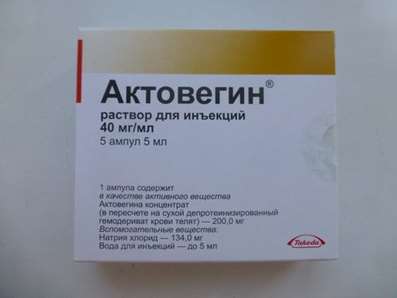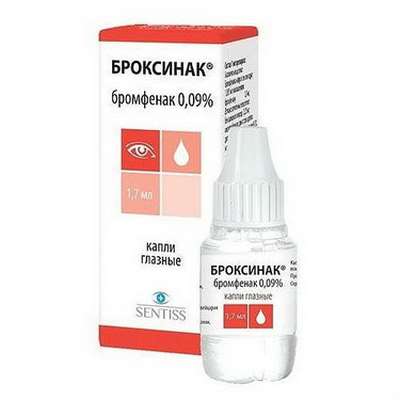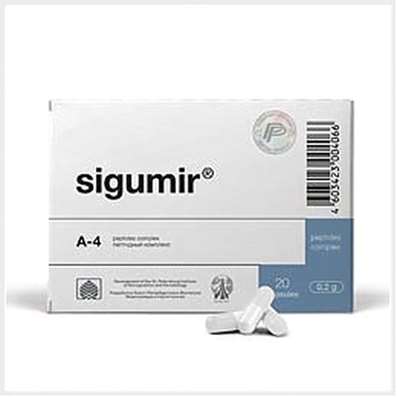Instruction for use: Vessel Due F
I want this, give me price
Dosage form: Capsules, Solution for intravenous and intramuscular injection
Active substance: Sulodexidum
ATX
B01AB11 Sulodexide
Pharmacological group
Anticoagulants
The nosological classification (ICD-10)
G93.4 Unspecified Encephalopathy: bilirubin encephalopathy; lacunarity status; Tremor when portal-systemic encephalopathy; The latent hepatic encephalopathy; Atherosclerotic encephalopathy; Hypertensive encephalopathy; hypoxic encephalopathy; dismetabolic encephalopathy; Encephalopathy; brain lesion; Porto-caval encephalopathy; Vascular encephalopathy; Traumatic encephalopathy; encephalopathy; encephalopathy; Encephalopathy secondary genesis; Encephalopathy discirculatory; Encephalopathy portocaval; epileptic encephalopathy; hemorrhagic shock and encephalopathy syndrome; Subacute spongiform encephalopathy
H36.0 Diabetic retinopathy (E10-E14 + with common fourth character .3): Haemorrhagic diabetic retinopathy; Diabetic retinopathy; Macular degeneration in patients with diabetes
I79 lesions of arteries, arterioles and capillaries in diseases classified elsewhere: Lack of capillary circulation
I79.2 Peripheral angiopathy in diseases classified elsewhere: diabetic angiopathy; Angiopathy in diabetes; arteriosclerosis diabetic; Pain in lesions of peripheral nerves; Diabetic angiopathy; Diabetic microangiopathy; Diabetic vascular disease; Intermittent angioneurotic disbaziya; Macroangiopathy in diabetes; microangiopathy; Microangiopathy in diabetes mellitus; Tingling sensations in the hands and feet; Coldness in the extremities; Peripheral angiopathy; Peripheral arterial disease; Sclerosis Menkeberga; Chronic obliterating diseases of arteries
N08.3 Glomerular lesions in diabetes mellitus (E10-14 + with common fourth sign .2): Nephropathy diabetic; Diabetic Nephropathy; Diabetic nephropathy in the background of type 1 diabetes mellitus; Diabetic nephropathy in patients with type I diabetes; Proteinuria in patients with type 2 diabetes mellitus
Composition and release form
Solution for injection 1 amp.
Sulodexide 600 le
Auxiliary substances: sodium chloride - 18 mg; Water for the preparation of injections - q.s. Up to 2 ml
In ampoules of 2 ml; In a box there are 10 ampoules.
Capsules 1 caps.
Sulodexide 250 le
Auxiliary substances: sodium lauryl sulfate - 3.3 mg; Colloid of silicon dioxide - 3.0 mg; Triglycerides 86.1 mg
The composition of the capsule: gelatin - 55.0 mg; Glycerol - 21.0 mg; Sodium ethyl-p-hydroxybenzoate 0.24 mg; Sodium propylparaoxybenzoate 0.12 mg; Titanium dioxide (E171) 0.30 mg; Red iron oxide 0.90 mg
In a blister of 25 pcs .; In the box 2 blisters.
Description of dosage form
Solution for injection: a light yellow or yellow clear solution, placed in ampoules of dark transparent glass.
Capsules: soft gelatin capsules of oval form, brick-red color.
Characteristic
A natural product isolated from the mucosa of the small intestine of a pig. It is a natural mixture of glycosaminoglycans: a heparin-like fraction with a molecular weight of 8,000 daltons (80%) and dermatan sulfate (20%).
Pharmachologic effect
Mode of action - Angioprotective, anticoagulant, antithrombotic, profibrinolytic
Pharmacodynamics
The fast-flowing heparin-like fraction has an affinity for antithrombin III, and dermatophane fraction for heparin II cofactor. Anticoagulant effect is manifested due to affinity for the cofactor of heparin II, which inactivates thrombin.
The mechanism of antithrombotic action is associated with the suppression of the activated X factor, with increased synthesis and secretion of prostacyclin (PGI2), with a decrease in the level of fibrinogen in the blood plasma,
The prophyllinolytic effect is due to the increase in the level of the tissue activator of plasminogen in the blood and the decrease in the content of its inhibitor.
Angioprotective effect is associated with the restoration of the structural and functional integrity of vascular endothelial cells, with the restoration of the normal density of the negative electrical charge of the pores of the basal membrane of the vessels. In addition, the drug normalizes the rheological properties of blood by reducing the level of triglycerides (stimulates lipolytic enzyme - lipoprotein lipase, hydrolyzing triglycerides, which are part of LDL).
Reduces the viscosity of the blood, suppresses the proliferation of mesangium cells, reduces the thickness of the basement membrane.
Pharmacokinetic
90% is absorbed in the vascular endothelium (creates a concentration 20-30 times higher in the tissues of other organs) and absorbed in the small intestine. Metabolised in the liver and kidneys. Unlike unfractionated heparin and low molecular weight heparins, sulodexide is not desulfated, which leads to a decrease in antithrombotic activity and significantly accelerates elimination from the body. Dose distribution by organs showed that the drug undergoes extracellular diffusion in the liver and kidneys 4 hours after administration.
24 hours after intravenous administration, excretion in the urine is 50% of the drug, and after 48 hours, 67%.
Indication of the drug Vessel Due F
Angiopathy with an increased risk of thrombosis, incl. After a recent myocardial infarction;
Disorders of cerebral circulation, including acute period of ischemic stroke and period of early recovery;
Discirculatory encephalopathy due to atherosclerosis, diabetes mellitus, hypertension;
Vascular dementia;
Occlusive lesions of peripheral arteries of atherosclerotic and diabetic origin;
Phlebopathy, deep vein thrombosis;
Microangiopathy (nephropathy, retinopathy, neuropathy) and macroangiopathy (diabetic foot syndrome, encephalopathy, cardiopathy) in diabetes mellitus;
Thrombophilic conditions, antiphospholipid syndrome (together with acetylsalicylic acid, and also after low-molecular heparins);
Treatment of heparin-induced thrombotic thrombocytopenia (GTT), since the drug does not cause and does not aggravate GTT.
Contraindications
Hypersensitivity;
Hemorrhagic diathesis and diseases accompanied by reduced blood coagulability;
Pregnancy (I trimester).
Pregnancy and breast-feeding
When pregnancy is prescribed under the strict supervision of a doctor. There is a positive experience of using for the purpose of treatment and prevention of vascular complications in patients with type 1 diabetes in the II and III trimesters of pregnancy, with the development of late toxicosis of pregnant women - gestosis.
Side effects
From the part of the intestine: nausea, vomiting, pain in epigastrium.
Allergic reactions: rash.
Other: pain, burning, bruising at the injection site.
Interaction
It is not recommended simultaneous use with drugs that affect the system of hemostasis (direct and indirect anticoagulants, antiaggregants).
Dosing and Administration
IM, IV (in 150-200 ml of physiological solution), inside. At the beginning of treatment, the contents of 1 ampoule should be injected daily in the / m for 15-20 days, then 1 capsule. 2 times a day orally between meals for 30-40 days. The full course should be repeated at least 2 times a year. At the doctor's discretion, the dosing regimen can be changed.
Overdose
Symptoms: bleeding or bleeding.
Treatment: withdrawal of the drug, symptomatic therapy.
Special instructions
If necessary, it is recommended to use the drug under the control of a coagulogram. At the beginning and the end of treatment it is expedient to determine the following parameters: APTT (normally 30-40 seconds, depending on the type and concentration of activator used, it can be 25-30 or 35-50 s), antithrombin III content (normally - 210-300 Mg / l), the time of bleeding (in Duke's norm - 2-4 min), the time of coagulation of unstabilized blood (normally according to the method of Milian in the Moravitsa modification - 6-8 min). Wessel Doué F increases the normal values by about one and a half times.
A comment
Vessel Due F, capsules - packaging Pharmacor Production (Russia).
Vessel Due F, ampoules - packing Pharmacor Production (Russia).
Storage conditions of the drug Vessel Due F
At a temperature not higher than 30 ° C.
Keep out of the reach of children.
The shelf life of the drug Vessel Due F
5 years.
Do not use beyond the expiration date printed on the package.

 Cart
Cart





